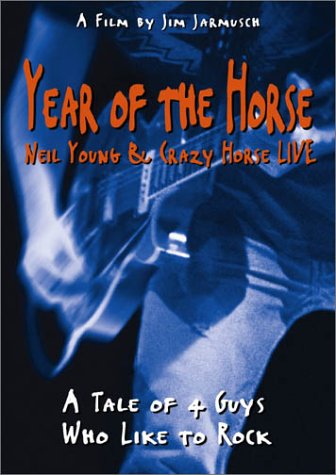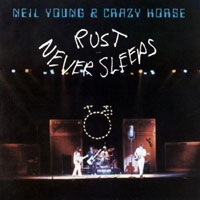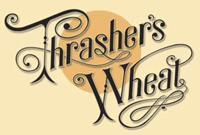Posts Tagged ‘review’
Written by Shar on 02 September 2013
The October 2013 issue of Uncut features a DVD review of Jim Jarmusch concert documentary “Year of the Horse” shot in 1996.
 They write: “This isn’t older musicians trying to sustain some delusion of youthful potency; this is a bunch of middle-aged men, led by a surly, stomping guitarist in baggy knee-length shorts and a nondescript T-shirt.
They write: “This isn’t older musicians trying to sustain some delusion of youthful potency; this is a bunch of middle-aged men, led by a surly, stomping guitarist in baggy knee-length shorts and a nondescript T-shirt.
” But the very lack of self-conscious stagecraft carries with it the implication that what you’re being given is something purely musical, unmediated by modern digital strategies that demand everything be a multi-platform, multi-media, interactive experience. It’s pure rock’n’roll, as the introductory tagline explain:
“Made loud to be played loud. CRANK IT UP!”.
It’s far from the ideal Neil and Crazy Horse setlist, Uncut opines, with only a handful of classics – including a version of “Tonight’s The Night” following a segment about the deaths of Danny Whitten and Bruce Berry – sprinkled parsimoniously through the show.
But it barely matters: as Young maintains, “It’s all one song,” an ongoing flow of music hewn into eight-to ten-minute chunks. And any technical effects are kept to a minimum, and used subtly, as when stage footage of the band playing “Slips Away” is blended with a tour bus shot of passing sky and landscape.
Read more at http://www.uncut.co.uk/neil-young-crazy-horse-year-of-the-horse-review#oOLywI4sU8cO2VW0.99
Tags: crazy horse, Jim Jarmusch, movie, review, Year of the Horse
Posted in Movie Info, News / Article, Videos | Comments Off on Uncut reviews Year of the Horse
Written by Shar on 15 June 2013
Jason Mendelsohn and Eric Klinger at the Website
Pop Matters discuss the Rust Never Sleeps album indepth.
They describe it as: ” Right down the middle mix of solo works and Crazy Horse jams, we get the sense of the two sides of Neil Young—cranky acoustic troubadour and cranky electric thud-rocker.”
The review goes on to state: “Clearly, there’s a lot to unpack with this most unusual project, from its in-concert setting to its songwriting to the way Neil Young attempts to find his place as an elder statesmen/boring dinosaur (depending on which side of the line you stood) in the late ‘70s.”
Interesting review with a diaglogue about the album between two music critics. Their views certianly differ. Mendelsohn writes: ” Yeah, “Pocahontas’ is straight up creepy. In fact, I’ve been skipping by most of the strummy bits lately. ‘Ride My Llama’ and ‘Pocahontas’ don’t do much for me. The same goes for ‘Thrasher’

—there just isn’t anything there. It’s the rockery on side two that ends up grabbing me. Where those songs may be missing some of the melody that propelled
After the Gold Rush and
Harvest, they make up for it in some signature hooks. You know the song has a catchy hook when you start humming to yourself about welfare mothers making better lovers”
Tags: review, Rust Never Sleeps
Posted in Album Info, News / Article | Comments Off on Analysis of Neil & Rust Never Sleeps
Written by bnbrainer on 22 November 2012
Nov-19 Toronto, ON Air Canada Centre w/Los Lobos
Great interview, from long-time Zuman legend, Neil historian and writer Sharry :
via Human-Highway.org.
“Neil was quite chatty with the audience. The first thing he said was “Thanks for coming, folks. Good to see you.” During the introduction to “Born In Ontario,” Neil said, “Home Sweet Home,” and then added, “Watch out for falling glass.” ”
Read the nice review with photos on Human-Highway.org.
Tags: review, Sharry, Toronto
Posted in Concert Reviews, News / Article | Comments Off on Toronto Show review from Sharry
Written by bnbrainer on 15 June 2012
Published: 2012/06/13 by Jambands
by Brian Robbins
Neil Young & Crazy Horse
Americana
Reprise Records
The first voice you hear on Americana is that of Old Black, Neil Young’s beloved, beat-to-shit, one-of-a-kind Les Paul that has been by his side since the late ‘60s. Old Black barks out a little cluster of close-cropped notes that lead up to a bit of gasoline-and-phlegm-soaked garage raga – the sort of drone and roar that shakes the bicycle pump right off the tenpenny nail driven into one of the 2×4 wall studs. Billy Talbot’s bass rumbles around the cement floor; and Ralph Molina’s drums sound like they’re exploding off the snow shovels tucked overhead in the rafters when he fires off a preliminary roll seven seconds in. The drums diddle with the beat for a few moments as the guitar stretches and groans, everything sounding restless and unsettled.
It’s the bass that finally brings things together with a defined groove at the 0:15 mark, freeing Old Black to get all snaky with a dollop of grunge jazz that pops, burbles, and lurches its way across the fretboard down to the heavy strings like a zombie-eyed Duane Eddy. When Frank “Poncho” Sampedro’s Les Paul begins its own growling chug half a minute in, the package is complete: Neil Young and Crazy Horse have returned, folks. The subject is Americana – and the sonic drama just described would be the opening seconds of Track 1, a rollicking, lumbering version of “Oh Susannah”. Yeah: that “Oh Susannah”.
(A confession: when I first heard the Americana version, I immediately thought, “Oh, man – ol’ Neil has taken Stephen Foster’s tune and applied the groove from Shocking Blue’s “Venus” to it!” Yeah, well – there goes my career as a music sleuth: turns out “Venus” was inspired by Tim Rose’s re-arrangement of “Oh Susannah”, as recorded by The Big Three in 1963 and Tim Rose & The Thorns in ’64.)
Perhaps this collection of covers – everything from folk tunes to doo-wop with a national anthem thrown in for good measure – will mark the last time that critics (and fans) refer to one of Young’s “phases” or “detours” … as if there was something that he was supposed to return to. Sooner or later, it’s gong to become obvious: whether it be a stripped-down acoustic arrangement of a message rooted deep in his heart or this joyously thrashed-out collection of songs by others, it’s all Neil Young’s music … the sound he was guided to by the muse. This is the trip – not a rest stop.
And what a trip it is. Offering up statements on the condition of the world without actually making any statements, Young and Crazy Horse peel back some layers and apply some topical sonic ointment. “High Flyin’ Bird” swoops, soars, and moans its “sit down, can’t fly, oh Lord I’m gonna die blues.” “She’ll Be Comin’ ‘Round The Mountain” is transformed into “Jesus’ Chariot”, its roar and thunder more second-gear diesel than second coming of the Savior. A jaunty butt-slapping-the-saddle rhythm and some ghostly Sons of the Pioneers-style moans manage to both take the edge off the lyrics of “Gallows Pole” and make the song even more haunting; “Tom Dula” is loaded with explosions of Old Black (amp tubes were harmed during the making of this album … they must have been).
In the old days, Crazy Horse was originally a doo-wop group – muscles which they get to flex on Americana’s version of “Get A Job”. (Oh, to hear the late Danny Whitten sing those sha-na-na-nas.) And you be the judge of what tongue is planted firmly in what cheek as the stately grunge of “God Save The Queen” thumps and crashes away – noting the blending-in of lyrics from “My County ‘Tis Of Thee” … by a children’s choir. “Let freedom ring!” is the thought that closes the album.
In the process, the album sounds and feels like old friends playing their asses off and having a hell of a time doing it. Talbot and Molina are masters at distilling a tune’s pulse to its barest essence and driving it home. And why doesn’t Poncho Sampedro receive more credit for his distinctive guitar work? Harnessing this kind of ragged womp and crackling muscle would be enough of a challenge for one guitarist; listen to Sampedro’s deft power weaves with Young, shake your head and smile.
In the end, the experience of listening to Americana can be as shallow or as deep as you want it to be. My advice is to not overanalyze Neil Young’s reasons for rejoining forces with Crazy Horse at this point in time and doling out this collection of songs.
It’s this simple: the muse spoke.
They played.
Enjoy.
Tags: Americana, review
Posted in News / Article | 1 Comment »
Written by bnbrainer on 06 June 2012
DISC OF THE WEEK
Neil Young reinvents songs the old-fashioned way
ROBERT EVERETT-GREEN
The Globe and Mail
Published Friday, Jun. 01 2012, 5:00 PM EDT, Last updated Saturday, Jun. 02 2012, 3:09 PM EDT
Long before sampling came along, there was an even more dynamic process for reusing and rearranging the materials of existing songs. It was called folk music.
Folk music in that sense began to disappear when scholars started noting down songs that had existed only in people’s shared recollection. The ancient ballad known as The Maid Freed from the Gallows had several other names in other languages, and other tunes and lyrics too, before the Harvard folklorist Francis Child studied its American variants in the 19th century.
Neil Young’s new disc with Crazy Horse celebrates the fluidity of the folk process, and implies that a good transformative cover carries on that tradition. The album includes heavy blues-rock versions of genuinely old songs such as Clementine and Gallows Pole (Young’s version of the ballad studied by Child), and of fifties radio hits such as Get a Job and Travel On.
Young’s Clementine is a towering, doom-laden number with only a ghostly trace of the lilting dance rhythm most people know. He focuses your mind on the fact that the narrator’s darling ends up dead – the latter half of this lengthy track is one long lament. In Tom Dula (a.k.a. Tom Dooley), Young simplifies the familiar rhythm and bears down for eight minutes on the murder and the execution that will pay for it. For Oh Susannah, he sets aside the jaunty Stephen Foster original and covers the raw variant recorded as The Banjo Song by the Big Three in 1963 (cunningly reworked as Venus by Shocking Blue in 1969). Jesus’s Chariot goes back to the spiritual that became She’ll Be Coming ’Round the Mountain, with a simplified melody and lots of heavy grinding on the song’s tonic root.
Throughout the album, Young’s vocals strive for something primal and true beneath the songs’ familiar surface. His slurry yet precise electric-guitar solos move powerfully through the darkest lyrical moods.
After a few of these intense, gloomy performances, you sense that this project is partly a belated retort to the mellowing tendencies of groups like the Kingston Trio, whose wistful Tom Dooley was a No. 1 hit in 1958. Lead Belly’s 1939 recording of Gallows Pole, by contrast, was about as raw and scary as they come. Young’s version, while still dark, has a jauntier gait and an almost comic feeling when he yelps out the repeated line, “Did you come to see me hang?”
In This Land Is Your Land, Young foregrounds Woody Guthrie’s seldom-heard political verses, and omits the more pastoral ones. But surely Guthrie’s point in combining the two was to contrast the beauty of the land with the ugliness of what sometimes goes on there.
The newest numbers, Get a Job and Travel On, feel stodgy compared to the Silhouettes’ 1957 version of the former, and Billy Grammer’s live rockabilly performances of the latter. Crazy Horse fans will probably get a kick out of hearing this revered and rugged ensemble sing doo-wop, but their tools aren’t the best for the job.
The closing number, God Save the Queen, seems like a surprising choice for a disc called Americana, till a children’s choir chimes in with verses from America (“land of the Pilgrims’ pride”) that were laid on the English tune in 1831. It would have been fun to hear Young sing a little of the German variant: Under Kaiser Wilhelm II, this song was known as Heil dir im Siegerkranz and was used as the German anthem right through the First World War. How’s that for a transformative cover?
Tags: Americana, Clementine, review
Posted in News / Article | Comments Off on Album Review: The Globe and Mail
 They write: “This isn’t older musicians trying to sustain some delusion of youthful potency; this is a bunch of middle-aged men, led by a surly, stomping guitarist in baggy knee-length shorts and a nondescript T-shirt.
They write: “This isn’t older musicians trying to sustain some delusion of youthful potency; this is a bunch of middle-aged men, led by a surly, stomping guitarist in baggy knee-length shorts and a nondescript T-shirt.








